Related Research Articles

Jewish eschatology is the area of Jewish theology concerned with events that will happen in the end of days and related concepts. This includes the ingathering of the exiled diaspora, the coming of a Jewish Messiah, afterlife, and the revival of the dead. In Judaism, the end times are usually called the "end of days", a phrase that appears several times in the Tanakh.

The Messiah in Judaism is a savior and liberator figure in Jewish eschatology, who is believed to be the future redeemer of the Jewish people. The concept of messianism originated in Judaism, and in the Hebrew Bible a messiah is a king or High Priest traditionally anointed with holy anointing oil. However, messiahs were not exclusively Jewish, as the Hebrew Bible refers to Cyrus the Great, king of Persia, as a messiah for his decree to rebuild the Jerusalem Temple.

Shimon bar Yochai, also known by his acronym Rashbi, was a 2nd-century tannaitic sage in ancient Judea, said to be active after the destruction of the Second Temple in 70 CE. He was one of the most eminent disciples of Rabbi Akiva, and attributed by many Orthodox Jews with the authorship of the Zohar, the chief work of Kabbalah.
There is no specific doctrinal view of Jesus in traditional Judaism. Monotheism, a belief in the absolute unity and singularity of God, is central to Judaism, which regards the worship of a person as a form of idolatry. Therefore, consideration of Jesus as deity is not an issue in traditional Jewish thought. The rejection of Jesus as Messiah has never been a theological issue for Judaism because Jewish eschatology holds that the coming of the Jewish Messiah will be associated with events that had not occurred at the time of Jesus, such as the rebuilding of The Temple, a Messianic Age of peace, and the ingathering of Jews to their homeland.
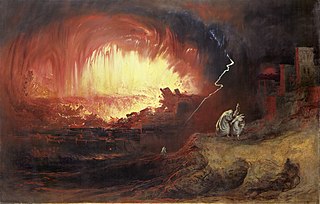
Vayeira, Vayera, or Va-yera is the fourth weekly Torah portion in the annual Jewish cycle of Torah reading. It constitutes Genesis 18:1–22:24. The parashah tells the stories of Abraham's three visitors, Abraham's bargaining with God over Sodom and Gomorrah, Lot's two visitors, Lot's bargaining with the Sodomites, Lot's flight, the destruction of Sodom and Gomorrah, how Lot's daughters became pregnant by their father, how Abraham once again passed off his wife Sarah as his sister, the birth of Isaac, the expulsion of Hagar, disputes over wells, and the binding of Isaac.

Noach, Noiach, Nauach, Nauah, or Noah is the second weekly Torah portion in the annual Jewish cycle of Torah reading. It constitutes Genesis 6:9–11:32. The parashah tells the stories of the Flood and Noah's Ark, of Noah's subsequent drunkenness and cursing of Canaan, and of the Tower of Babel.

Rabbi Meir or Rabbi Meir Baal HaNes was a Jewish sage who lived in the time of the Mishnah. He was considered one of the greatest of the Tannaim of the fourth generation (139-163). He is the third most frequently mentioned sage in the Mishnah. His wife Bruriah is one of the few women cited in the Gemara.
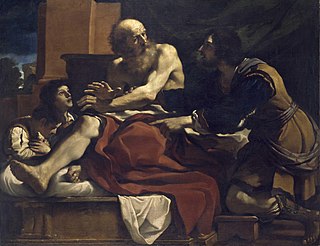
Vaychi, Vayechi or Vayhi is the twelfth weekly Torah portion in the annual Jewish cycle of Torah reading and the last in the Book of Genesis. It constitutes Genesis 47:28–50:26. The parashah tells of Jacob's request for burial in Canaan, Jacob's blessing of Joseph's sons Ephraim and Manasseh, Jacob's blessing of his sons, Jacob's death and burial, and Joseph's death.
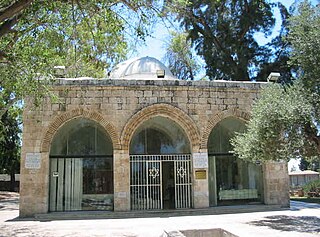
Rabban Gamaliel II was a rabbi from the second generation of tannaim. He was the first person to lead the Sanhedrin as nasi after the fall of the Second Temple in 70 CE.
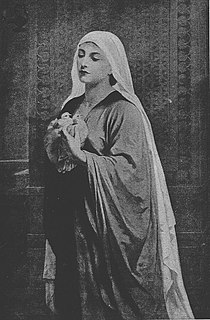
Tazria, Thazria, Thazri'a, Sazria, or Ki Tazria' is the 27th weekly Torah portion in the annual Jewish cycle of Torah reading and the fourth in the Book of Leviticus. The parashah deals with ritual impurity. It constitutes Leviticus 12:1–13:59. The parashah is made up of 3,667 Hebrew letters, 1,010 Hebrew words, 67 verses, and 128 lines in a Torah Scroll.
Joshua ben Perahiah or Joshua ben Perachya was Nasi of the Sanhedrin in the latter half of the 2nd century BCE.

Pinechas, Pinchas, Pinhas, or Pin'has is the 41st weekly Torah portion in the annual Jewish cycle of Torah reading and the eighth in the Book of Numbers. It tells of Phinehas's killing of a couple, ending a plague, and of the daughters of Zelophehad's successful plea for land rights. It constitutes Numbers 25:10–30:1. The parashah is made up of 7,853 Hebrew letters, 1,887 Hebrew words, 168 verses, and 280 lines in a Torah scroll.
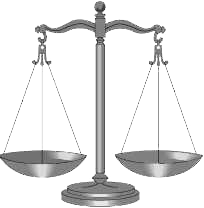
Shofetim or Shoftim is the 48th weekly Torah portion in the annual Jewish cycle of Torah reading and the fifth in the Book of Deuteronomy. It comprises Deuteronomy 16:18–21:9. The parashah provides a constitution—a basic societal structure—for the Israelites. The parashah sets out rules for judges, kings, Levites, prophets, cities of refuge, witnesses, war, and unsolved murders.

Nitzavim, Nitsavim, Nitzabim, Netzavim, Nisavim, or Nesabim is the 51st weekly Torah portion in the annual Jewish cycle of Torah reading and the eighth in the Book of Deuteronomy. It comprises Deuteronomy 29:9–30:20. In the parashah, Moses told the Israelites that all the people stood before God to enter into the covenant, violation of which would bring on curses, but if they returned to God and heeded God's commandments, then God would take them back in love and bring them together again from the ends of the world. Moses taught that this Instruction was not beyond reach, and Moses put before the Israelites life and death, blessing and curse, and exhorted them to choose life by loving God and heeding the commandments.
In Jewish eschatology Mashiach ben Yoseph or Messiah ben Joseph, also known as Mashiach bar/ben Ephraim, is a Jewish messiah from the tribe of Ephraim and a descendant of Joseph. The figure's origins are much debated. Some regard it as a rabbinic invention, but others defend the view that its origins are in the Torah.
Joshua ben Levi was an amora, a scholar of the Talmud, who lived in the Land of Israel in the first half of the third century. He lived and taught in the city of Lod. He was an elder contemporary of Johanan bar Nappaha and Resh Lakish, who presided over the school in Tiberias. With Johanan bar Nappaha, he often engaged in homiletic exegetical discussions.
Eliezer ben Hurcanus or Hyrcanus was one of the most prominent Sages (tannaim) of the 1st and 2nd centuries in Judea, disciple of Rabban Yohanan ben Zakkai and colleague of Gamaliel II, and of Joshua ben Hananiah. He is the sixth most frequently mentioned sage in the Mishnah.

Tanna Devei Eliyahu is the composite name of a midrash, consisting of two parts, whose final redaction took place at the end of the 10th century CE. The first part is called "Seder Eliyahu Rabbah" ; the second, "Seder Eliyahu Zuṭa".

There are several passages in the Talmud which are believed by some scholars to be references to Jesus. The name used in the Talmud is "Yeshu", the Aramaic vocalization of the Hebrew name Yeshua.
In rabbinic Jewish eschatology, the Righteous Priest or Priest of Righteousness is a figure identified with one of the Four Craftsmen in a vision mentioned in the Book of Zechariah. He is found in the Talmud and Midrash.
References
- ↑ Babylonian Talmud: Tractate Sanhedrin Folio 98a
- ↑ Schwartz, Howard, Caren Loebel-Fried, & Elliot K. Ginsburg. Tree of Souls: The Mythology of Judaism Oxford University Press US, 2004 ISBN 0-19-508679-1, ISBN 978-0-19-508679-9 ; p. 492
- ↑ Bruce, Frederick Fyvie. The Epistle to the Hebrews. Wm. B. Eerdmans Publishing, 1990; ISBN 0-8028-2514-1, ISBN 978-0-8028-2514-8 ;p. 99
- ↑ Berger, Abraham "Captivity at the Gate of Rome: the story of a Messianic Motif", Proceedings of the American Academy for Jewish Research, Vol. 44 (1977), pp. 1-17